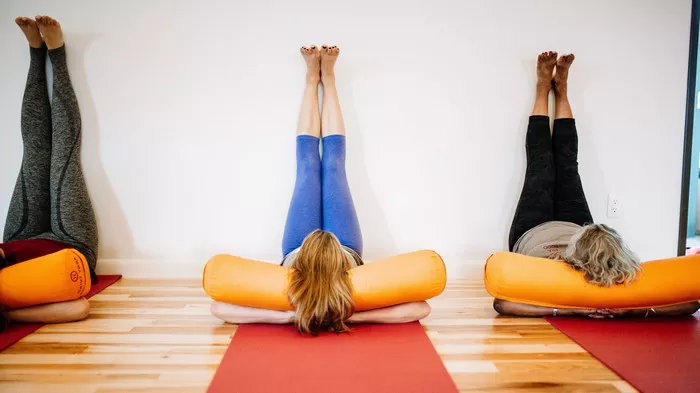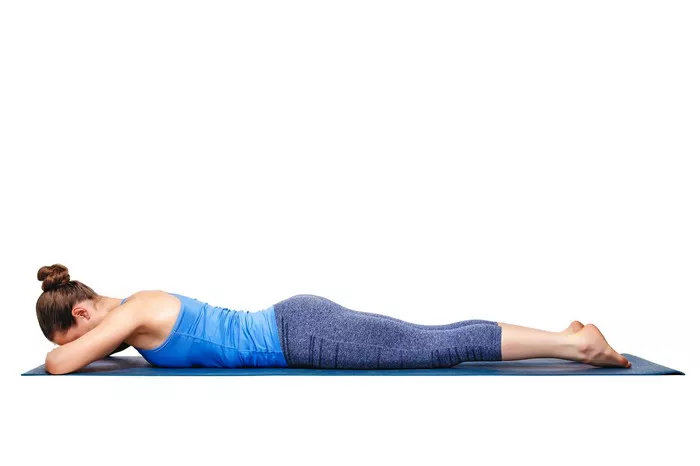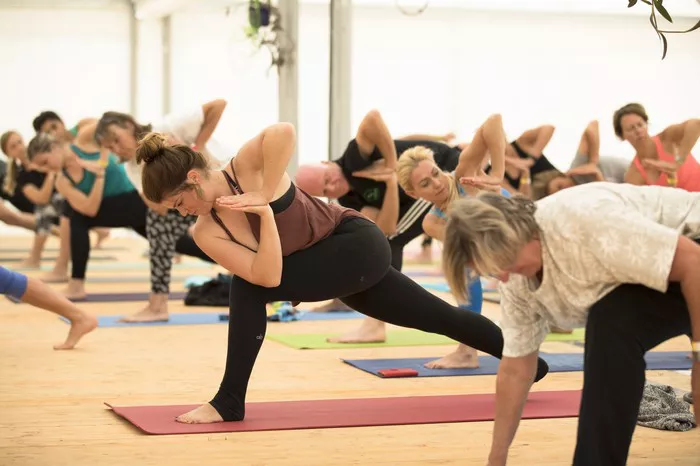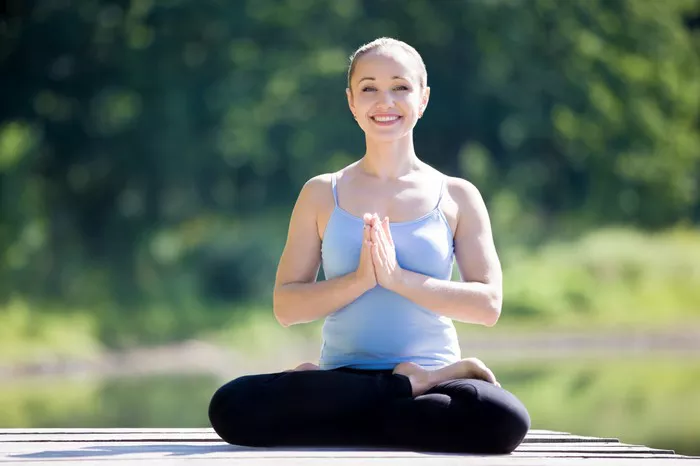In recent years, online yoga classes have become an essential part of many people’s wellness routines. With the increasing popularity of virtual classes, individuals around the world have found new ways to engage in yoga from the comfort of their homes. One of the most calming and healing forms of yoga that has made its way online is restorative yoga.
Restorative yoga is a practice designed to help the body and mind relax deeply, recover from stress, and restore balance. It involves gentle poses that are held for extended periods, often with the support of props like blankets, bolsters, and blocks, making it ideal for anyone looking to relieve tension or calm their nervous system. However, when it comes to practicing restorative yoga online, many may wonder: Can restorative yoga be just as effective virtually as it is in a studio setting? In this article, we’ll explore how restorative yoga can be practiced online, the benefits of doing so, and how to create an ideal virtual restorative yoga experience.
What is Restorative Yoga?
Restorative Yoga: A Path to Deep Relaxation
Restorative yoga is a slower-paced practice that emphasizes gentle stretching, deep breathing, and relaxation. Unlike other forms of yoga, which may focus on building strength, flexibility, or stamina, restorative yoga is all about slowing down and inviting the body into a deep state of rest.
In a typical restorative yoga class, participants hold poses for several minutes, allowing the body to release tension and ease into a state of calm. These postures are supported by props such as bolsters, blankets, or blocks, making the practice accessible to individuals of all abilities. The goal is not to push yourself physically but to relax into each position and cultivate mindfulness.
Why Choose Restorative Yoga?
Restorative yoga has a wide range of benefits, including:
Stress Reduction: By focusing on breathwork and mindful relaxation, restorative yoga helps to reduce the effects of stress on the body and mind.
Enhanced Flexibility: The extended hold times in each posture help to lengthen muscles and release stiffness.
Mental Clarity: The calming nature of the practice can help clear mental clutter, promoting a sense of mental peace and clarity.
Improved Sleep: Regular practice can improve sleep quality by calming the nervous system and reducing anxiety.
Recovery and Healing: Restorative yoga helps promote recovery from physical strain, injury, or burnout by offering a gentle way to recharge.
For these reasons, restorative yoga is ideal for people experiencing chronic stress, anxiety, fatigue, or recovering from injury. But with the rise of virtual classes, one may wonder if the deep relaxation restorative yoga offers can be fully experienced in an online format.
Restorative Yoga Online: How Does it Work?
The Rise of Virtual Yoga
Online yoga has seen a dramatic surge in popularity, especially during and after the COVID-19 pandemic. The convenience of practicing yoga at home has attracted many individuals who might otherwise have difficulty attending a physical studio class. While active forms of yoga (such as Vinyasa or Power Yoga) can be taught effectively through online platforms, restorative yoga has also made a seamless transition to virtual spaces.
In an online restorative yoga class, the instructor guides participants through a series of slow, supported poses designed to encourage relaxation. Many instructors use video conferencing platforms like Zoom or pre-recorded videos to deliver their classes. Some may offer live sessions, where students can interact with the instructor, ask questions, and receive real-time adjustments or modifications.
Restorative yoga, while deeply relaxing, also requires a certain level of attention to detail. The teacher provides cues to help students set up their space, adjust props, and align their bodies. In virtual classes, instructors often use verbal cues rather than hands-on adjustments, but with clear instructions, participants can still set up their practice space effectively.
The Tools You Need for Online Restorative Yoga
Practicing restorative yoga online is possible with minimal equipment. Below are a few key tools you’ll need:
Props
Restorative yoga heavily relies on props to support your body during long-held poses. These may include:
Bolsters: These large, cushion-like props help support the body in a variety of poses.
Blankets: Soft blankets can be used to add warmth or provide additional cushioning.
Blocks: Yoga blocks assist in modifying poses for comfort and proper alignment.
Straps: Yoga straps can be used to gently stretch muscles or hold poses for longer periods.
In an online class, you may be instructed to use common household items as makeshift props. For example, a pillow can act as a bolster, or a rolled-up towel can serve as a yoga strap.
A Quiet, Comfortable Space: Creating a peaceful environment at home is essential for restorative yoga. Choose a quiet room where you won’t be disturbed. Ideally, your space should be free from distractions, with enough room to spread out a yoga mat or blanket. Consider dimming the lights or using candles for an added sense of calm.
A Device with a Stable Internet Connection: To participate in online restorative yoga, you’ll need a device like a laptop, tablet, or smartphone with a reliable internet connection. It’s important to ensure that the device’s camera and microphone are working properly if you are attending a live class.
Benefits of Practicing Restorative Yoga Online
1. Convenience and Flexibility
One of the major advantages of practicing restorative yoga online is the flexibility it offers. You no longer have to commute to a yoga studio or adhere to a fixed schedule. Instead, you can practice at your own pace, in your own space, and at times that are most convenient for you.
Whether you prefer early morning sessions to start your day or a late-night class to wind down, online restorative yoga offers the freedom to create a routine that suits your lifestyle. Many online platforms also offer pre-recorded sessions, so you can practice whenever you like, without the pressure of live participation.
2. Comfort and Familiarity of Home
Practicing restorative yoga in the comfort of your own home can enhance the relaxing benefits of the practice. Being in a familiar environment helps reduce external stressors, allowing you to truly focus on the body’s sensations and your breath.
In an online class, you have the freedom to adjust your space, wear whatever is comfortable, and create a soothing atmosphere with music, candles, or incense—something that may not be possible in a group studio class.
3. Personalized Guidance
Though virtual yoga classes don’t allow for hands-on adjustments, many instructors provide personalized guidance through detailed verbal cues. In live classes, instructors often take the time to offer individual suggestions and modifications based on what they see. Some teachers may also offer private one-on-one sessions, providing personalized support tailored to your needs.
Additionally, online restorative yoga gives you the option to ask questions before or after class via chat or email, ensuring you have all the guidance you need to practice safely and effectively.
4. Access to Expert Instructors
Online yoga allows you to access instructors from all over the world, many of whom specialize in restorative practices. You can take classes with experienced teachers who may not be available in your local area. Whether you’re looking for a specific style or a particular teacher’s approach, online platforms offer a vast array of options to meet your needs.
5. Cost-Effective
Online yoga classes can also be more affordable than in-person sessions. Many virtual platforms offer subscription models that give you access to a wide variety of classes, including restorative yoga. This allows you to practice regularly without the expense of attending studio classes.
See Also: Self-Restorative Yoga: A Path to Healing and Rejuvenation
How to Maximize Your Online Restorative Yoga Experience
1. Set Up Your Space
Create a dedicated area for your practice where you can relax without interruptions. Lay out your yoga mat, gather your props, and ensure that your environment feels peaceful. Consider dimming the lights, playing soft music, or lighting a candle to set the mood.
2. Be Mindful of Your Technology
Ensure your device is fully charged or plugged in, and that your internet connection is stable to avoid interruptions during class. If you’re attending a live class, try to position your camera in a way that allows the instructor to see you if feedback is needed.
3. Use Props for Comfort
Use props to make your practice more comfortable and supportive. You can experiment with the amount of support needed in each pose, adjusting props as necessary. Props like blankets, cushions, or pillows help deepen the restorative effect of the poses.
4. Practice Mindfully
Restorative yoga is about relaxation, so be sure to focus on your breath and allow yourself to truly settle into each posture. Avoid rushing or pushing yourself to hold positions longer than feels comfortable. Take time to notice the subtle sensations in your body and practice with mindfulness.
Conclusion
Restorative yoga is an excellent way to relax, reduce stress, and promote overall wellness. While there are unique aspects of practicing in a studio, online restorative yoga offers many of the same benefits. With the right tools, a peaceful environment, and the guidance of skilled instructors, restorative yoga can be practiced effectively online.
The flexibility, comfort, and personalized instruction available in virtual classes make online restorative yoga a valuable option for anyone looking to improve their mental and physical well-being. Whether you are new to yoga or an experienced practitioner, online restorative yoga offers an accessible and restorative way to nourish both body and mind.
So, if you’re wondering whether restorative yoga can be effectively practiced online, the answer is a resounding yes. With the right resources and mindset, online restorative yoga can be just as transformative and healing as a class in a studio.
You Might Be Interested In


















